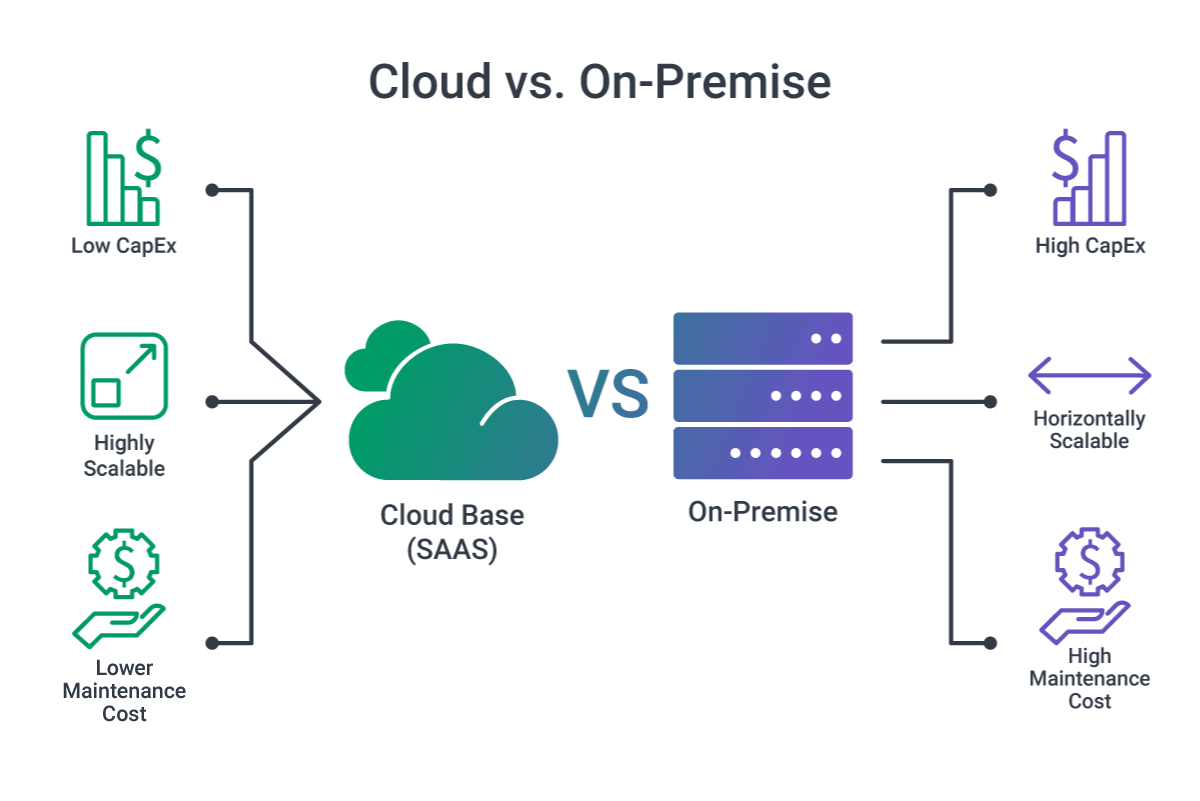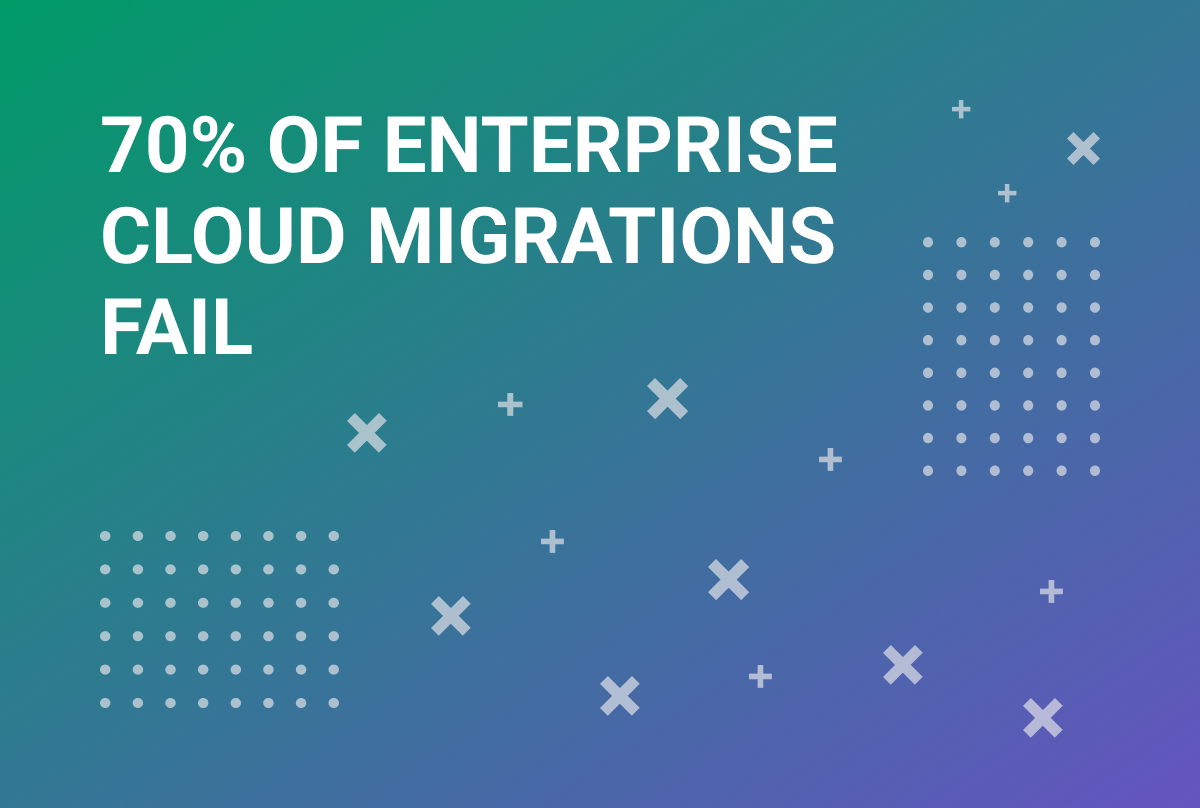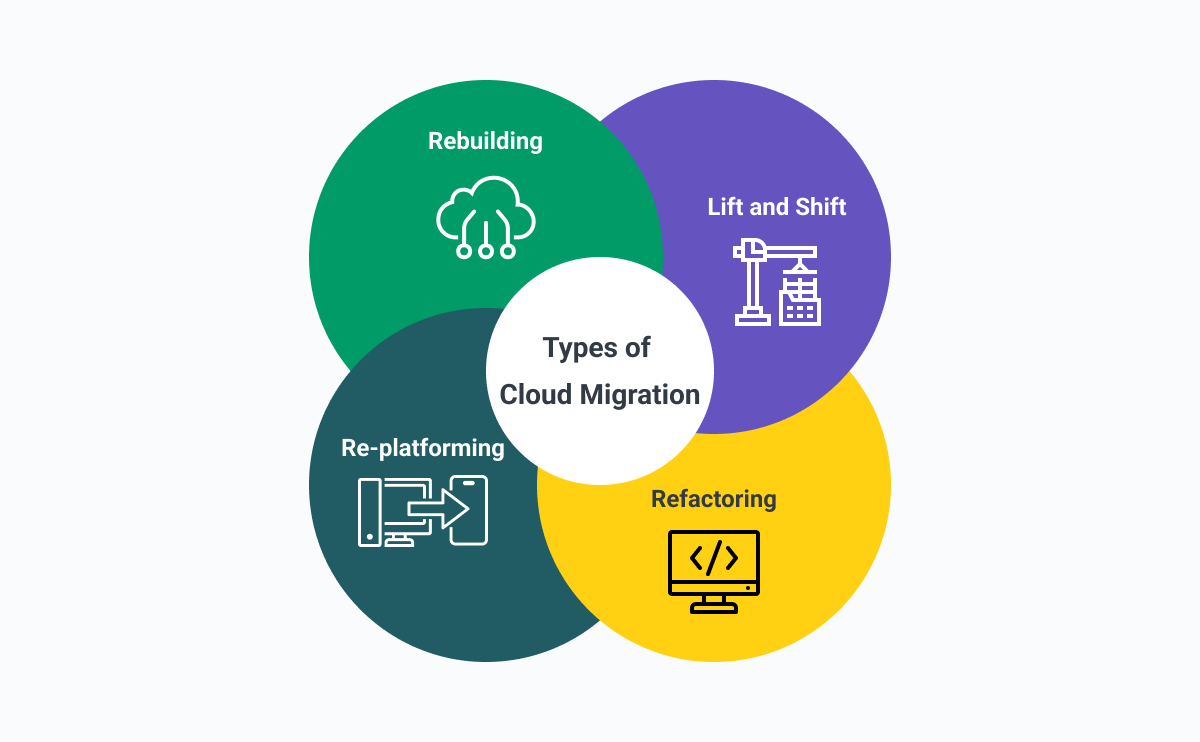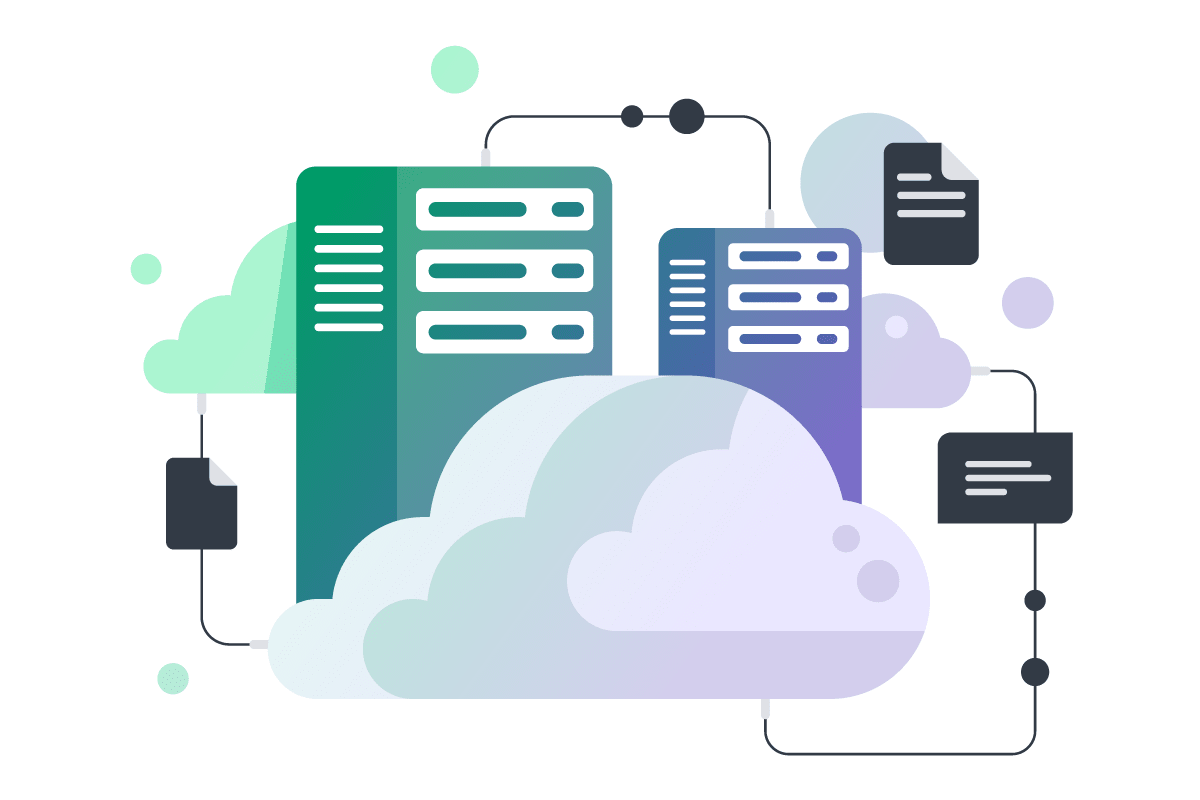In today's fast-paced and dynamic business landscape, enterprises are constantly seeking ways to stay competitive and adapt to changing industry trends.
Application migration is the process of migrating a software application from one computing environment to another, typically from an on-premises server to a cloud provider's environment.
This comprehensive guide will explore the intricacies of application migration and provide valuable insights into different migration strategies.
What is Application Migration and Why is it Important?
Definition of application migration
Application migration refers to the transfer of software applications from one computing environment to another. This process involves cloud migration - moving an application from an on-premises infrastructure to a cloud-based environment.

Importance of application migration for businesses
Application migration is crucial for businesses as it enables scalability, flexibility, and cost-efficiency. By migrating applications to the cloud, businesses can take advantage of cloud computing resources, such as storage, processing power, and networking, to efficiently meet their changing needs.
Benefits of successful application migration to the cloud
Successful application migration to the cloud offers several benefits, including improved scalability, enhanced security, reduced operational costs, and increased agility. It allows businesses to focus on their core competencies while leveraging the expertise of cloud service providers.
Common challenges faced during application migration
While application migration offers numerous benefits, there are also challenges that businesses may encounter. These challenges include:
- data migration complexities;
- application compatibility issues;
- security concerns;
- potential disruptions to business operations.
An unfortunate, but pertinent, detail to note is that businesses experience a failure rate of one-third for migrations, with enterprise-level businesses facing an even higher rate of 70%.1 Despite the numerous advantages associated with migrating to the cloud, the endeavor is often filled with difficulties.
Softjourn's Solutions Architect, Taras Romaniv, pointed out that "Migrations may fail due to poor communication, lack of planning, or inadequate testing."
Romaniv also mentioned that technical challenges, especially when dealing with outdated technology, customizations, or integrations, can result in "delays, cost overruns, or even failures."

Key considerations before starting an application migration project
Before embarking on an application migration project, businesses should consider factors such as their existing application portfolio, costs involved in migration, compatibility with the cloud environment, and the availability of skilled resources. A well-planned approach and thorough analysis are crucial to ensuring a successful migration.
Additionally, it may be worth considering which infrastructure is best for your business. For some, moving to the cloud is perfect, while others prefer a hybrid approach.
Understanding Different Application Migration Strategies
Overview of common application migration strategies
There are various application migration strategies that businesses can employ depending on their unique requirements. These strategies include the lift-and-shift approach, re-platforming, re-architecting, refactoring, and replacing applications with software-as-a-service (SaaS) alternatives.

Application migration to the cloud: A step-by-step process
Application migration to the cloud involves a systematic process that includes assessment, planning, migration, testing, and optimization. Each step is crucial to ensuring a smooth and successful migration of applications.
Application migration best practices and guidelines
We recommend being armed with a set of best practices and guidelines businesses should follow to maximize the success of their application migration projects. These practices include conducting a thorough assessment, prioritizing applications, testing extensively, and ensuring proper communication and collaboration.

How to create a successful application migration plan
A successful application migration plan requires meticulous planning and coordination. It should include a clear timeline, resource allocation, risk mitigation strategies, and a comprehensive understanding of the target cloud environment.
Factors to consider when choosing a cloud provider for application migration
When selecting a cloud provider for application migration, businesses should consider factors such as security measures, pricing models, scalability, reliability, and the availability of migration tools and services.
Exploring AWS as a Popular Cloud Provider for Cloud Migration
Advantages of using AWS for application migration
Amazon Web Services (AWS) is a popular choice for application migration due to its extensive range of services and robust infrastructure. The advantages of using AWS for application migration include flexibility, scalability, high availability, security, and cost-effectiveness.
Key AWS services and tools for application migration
AWS provides a comprehensive set of services and tools specifically designed for application migration. These include AWS Server Migration Service (SMS), AWS Database Migration Service (DMS), AWS Migration Hub, and AWS Application Discovery Service.
Migration patterns for application migration to AWS
There are different migration patterns that businesses can follow when migrating applications to AWS. These patterns include re-hosting, re-platforming, repurchasing, rearchitecting, and retiring applications.

Application migration costs and cost optimization on AWS
While the cost of application migration can vary depending on factors such as the complexity of applications and the chosen migration strategy, AWS provides cost optimization services and tools to help businesses optimize their cloud expenses.
By using FinOps services, you can further optimize your cloud spending, reducing costs and maximizing your return on investments. You can hire experts to negotiate with Cloud Service Providers (CSPs) to secure substantial discounts, helping you save significantly on cloud costs.
For example, Softjourn’s skilled DevOps team helped one of our clients save over $25,000 on AWS this year and will continue to save thousands of dollars over time. Additionally, we reduced AWS Costs by 30% for our client, Cinewav, on their Multi-Regional Cloud Servers.

Real-world examples of successful application migration to AWS
Several organizations have successfully migrated their applications to AWS, achieving improved performance, cost savings, and scalability. Companies like Airbnb, Expedia, and Netflix have leveraged AWS to scale their operations and deliver seamless user experiences.
Best Practices for a Successful Application Migration to Cloud
Design a scalable and resilient cloud architecture for application migration
Designing a scalable and resilient cloud architecture is crucial for a successful application migration. This involves considering factors such as fault tolerance, load balancing, auto-scaling, and disaster recovery mechanisms.
Ensure optimal application performance during and after migration
Optimal application performance is essential during and after migration. Automated testing, performance monitoring, and optimization techniques can help businesses ensure that their applications perform well in the new cloud environment.
Manage security and compliance during the application migration process
Security and compliance should be prioritized throughout the application migration process. Implementing security measures, conducting vulnerability assessments, and ensuring compliance with industry regulations are essential for protecting sensitive data.

Utilize data migration strategies for seamless transition to the new environment
Data migration is a critical aspect of application migration. Businesses should consider strategies such as data replication, ETL (extract, transform, load) processes, and data validation to ensure a seamless transition of data to the new cloud environment.
Consider application modernization during the migration process
Application migration provides an opportunity for businesses to modernize their applications. Considerations such as microservices architecture, containerization, and adoption of serverless computing can help improve the scalability, agility, and maintainability of applications.
Take the First Step Towards Migrating Your Application
Application migration is a critical process for businesses looking to embrace the benefits of cloud computing. By understanding different migration strategies, leveraging the right cloud provider, following best practices, and considering key factors, organizations can successfully migrate their applications and unlock the advantages of the cloud environment.

Are you ready to unlock the full potential of the cloud for your business? Let Softjourn's expert cloud consulting services take you there! From FinOps Consulting to legacy application modernization services, we have you covered. Contact us today to start your seamless application migration journey and stay ahead in the world of technology and innovation.
As technology continues to evolve, application migration will remain a crucial aspect of business transformation. Cloud providers, such as AWS, will continue to innovate and provide advanced tools and services to simplify the migration process and support organizations in their digital transformation journeys.
FAQ: All About Cloud and AWS Migration
Q: What is application migration?
A: Application migration refers to the process of moving an application from one environment to another, such as migrating an application from an on-premise data center to a public or private cloud.
Q: Why do organizations need to migrate their applications?
A: Organizations may need to migrate their applications for various reasons, including the need to modernize their technology stack, increase scalability and flexibility, reduce infrastructure costs, or take advantage of new features and functionalities offered by cloud platforms.
Q: What are the different types of application migration approaches?
A: There are several types of application migration approaches, including lift-and-shift, re-platforming, re-architecture, and hybrid approach. Each approach has its own advantages and considerations depending on the specific requirements of the application.
Q: What is lift-and-shift migration?
A: Lift-and-shift migration, also known as "rehosting," involves moving an application from its existing environment to a new environment without making any significant changes to the application. This approach is relatively quick and easy but may not take full advantage of cloud resources.
Q: What is re-platforming migration?
A: Re-platforming migration involves making some changes to the application while moving it to a new environment. These changes can include migrating to a different cloud platform or making minor modifications to optimize the application for the new environment.
Q: What is re-architecture migration?
A: Re-architecture migration involves significant changes to the application's architecture or design during the migration process. This approach allows organizations to leverage the cloud platform's computing capabilities and can result in a more scalable and efficient application.
Q: What is a hybrid approach to application migration?
A: A hybrid approach combines elements of lift-and-shift, re-platforming, and re-architecture approaches. It allows organizations to migrate different parts of the application using the most appropriate approach for each component.
Q: What are some challenges organizations may face during application migration?
A: Some challenges organizations may face during application migration include application dependencies, data migration, performance issues, compatibility with the new environment, and ensuring the correct migration of application components.
Q: How can organizations ensure a smooth application migration?
A: To ensure a smooth application migration, organizations should follow a well-defined methodology, conduct thorough testing during the migration process, have a detailed application migration checklist, and engage application migration services if needed.
Q: What is the role of a detailed application migration checklist?
A: A detailed application migration checklist is a document that outlines all the necessary steps and considerations for a successful application migration. It helps organizations plan and track the migration process, ensuring that no critical steps are missed.
Q: How important is testing during the application migration process?
A: Testing is crucial during the application migration process as it helps identify and resolve any issues or compatibility issues before the migration is complete. It ensures that the migrated application functions as expected in the new environment.















